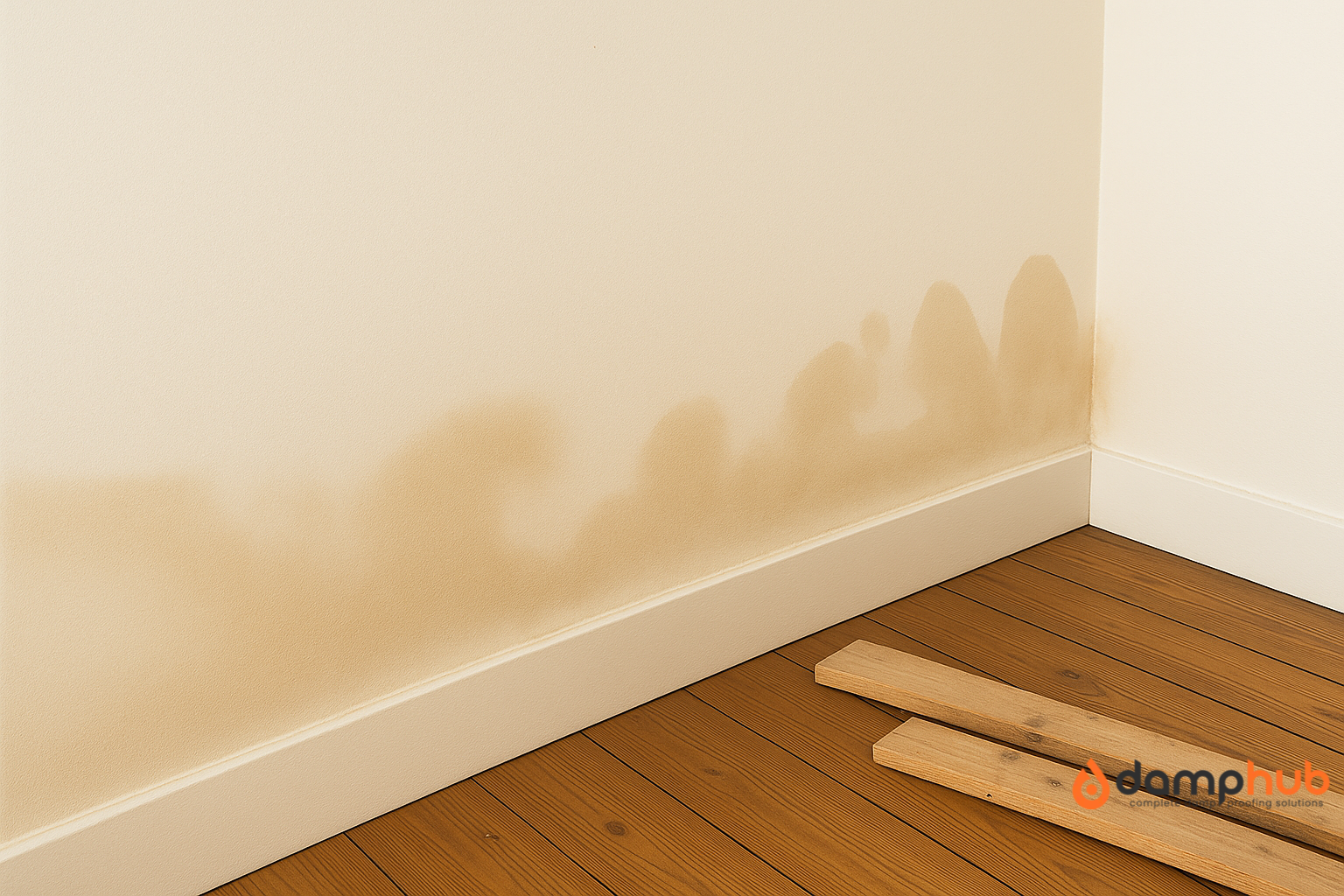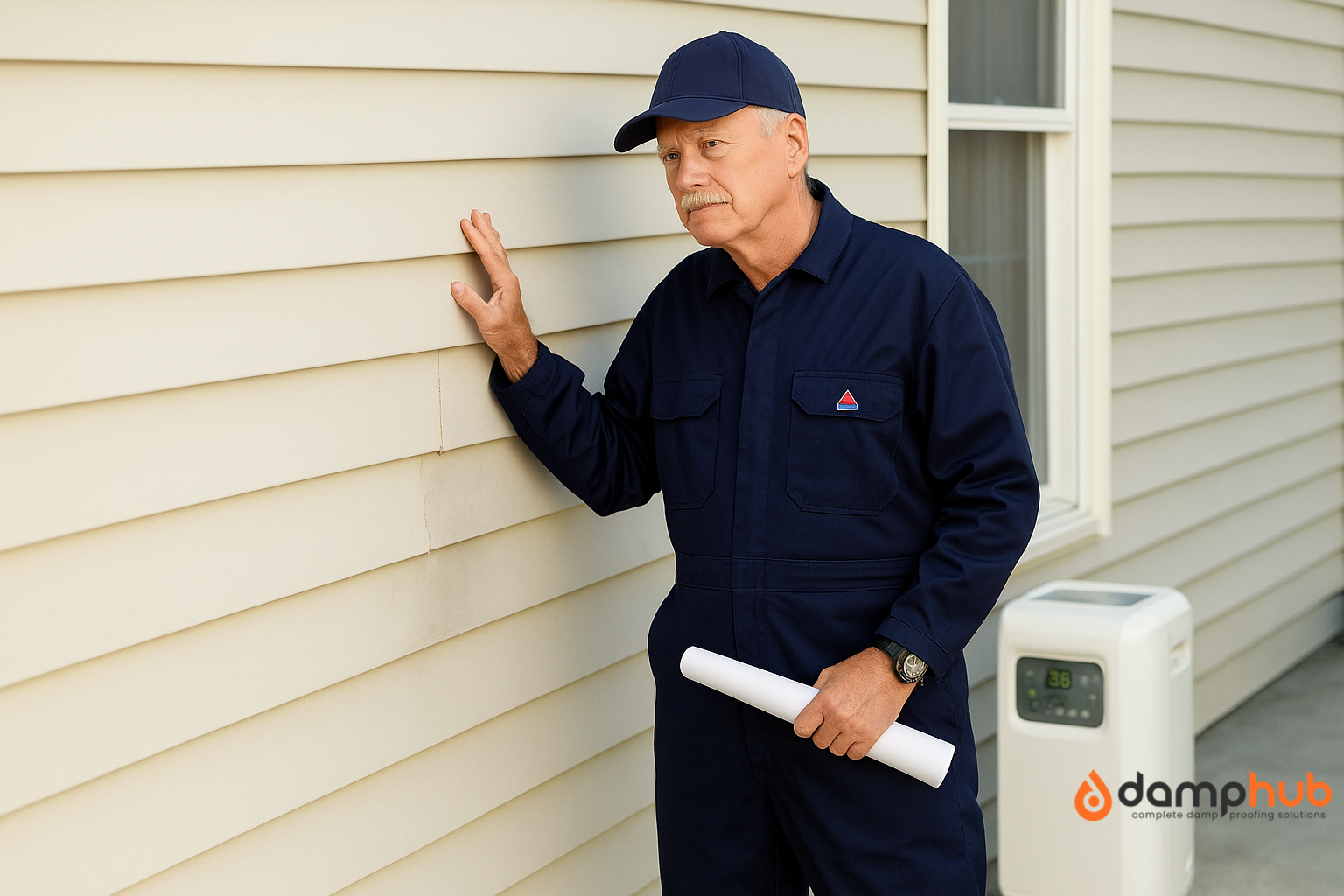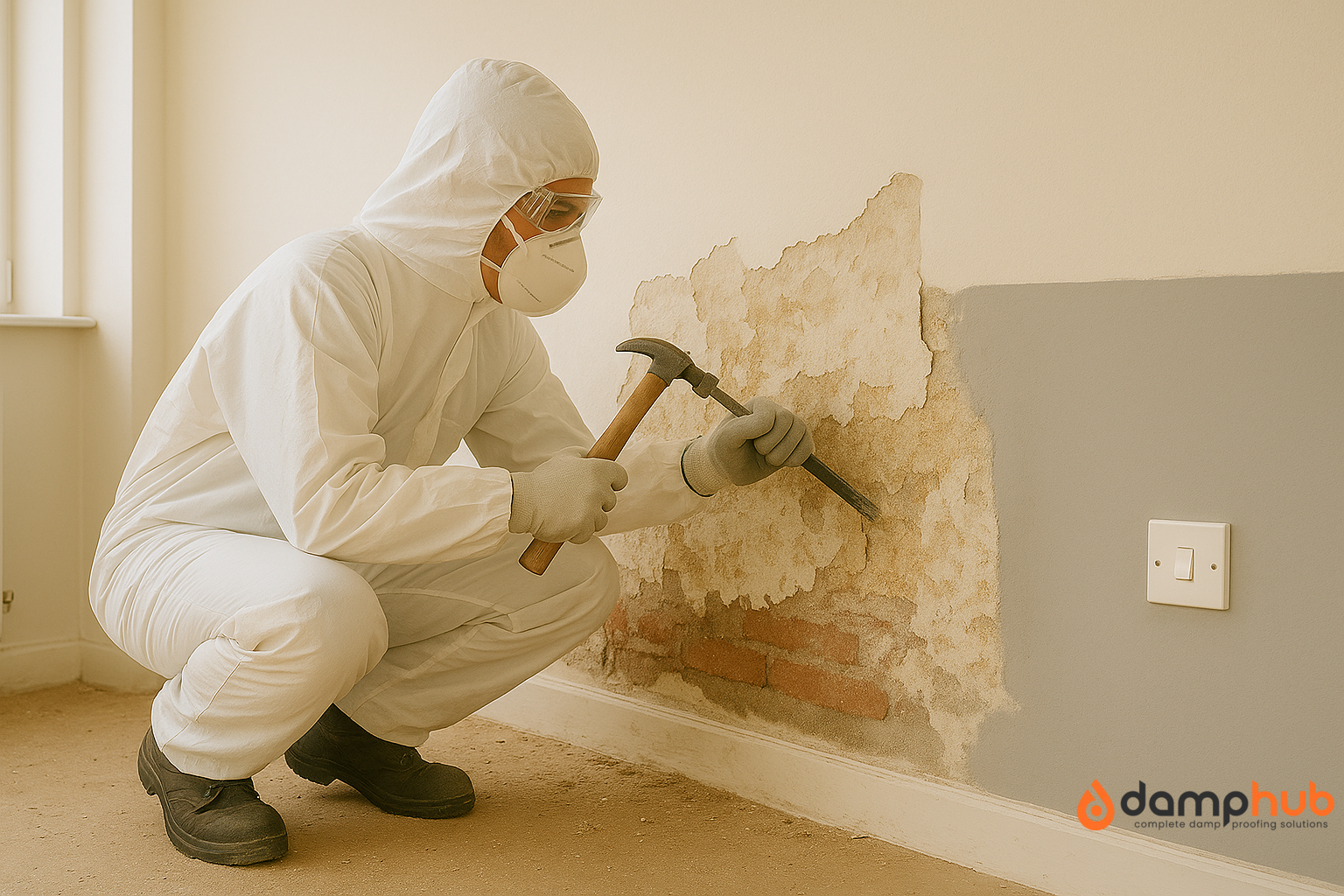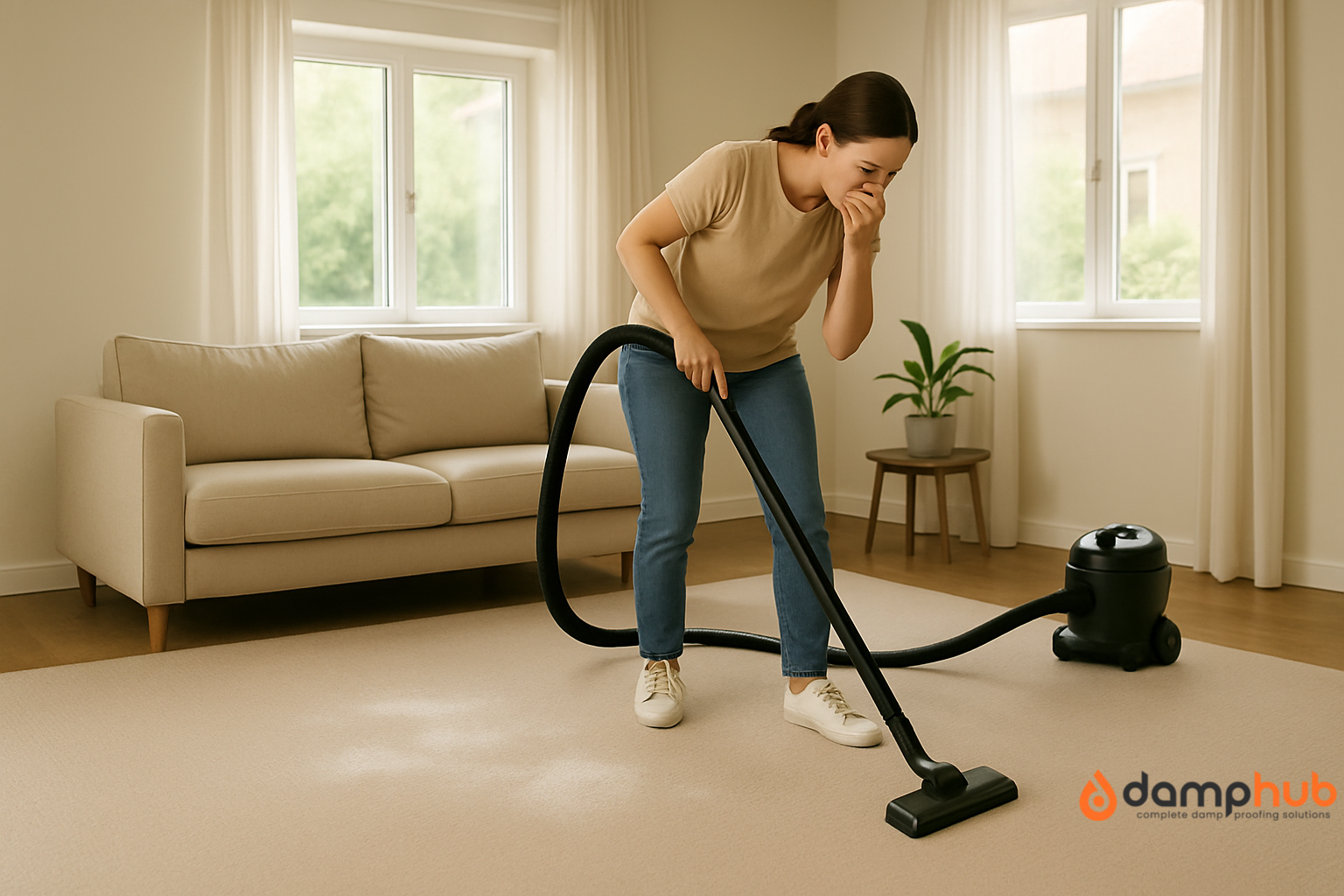
Quick Takeaways
- ✓ A damp carpet smell often means moisture, mildew, or mould under the surface.
- ✓ Common causes: spills, poor ventilation, leaks, or rising damp.
- ✓ Musty odour can develop within 24–48 hours of exposure to moisture.
- ✓ Getting rid of the smell requires thorough drying and deep cleaning.
- ✓ Natural products like baking soda and vinegar can help deodorise safely.
A musty or damp carpet smell can leave the whole house feeling dirty, despite it being just freshly cleaned.
Other than being stinky, that smell might suggest underlying moisture, mildew, or even mould developing beneath the carpet.
Regardless of the cause, whether it is a spill, flood, condensation, or rising damp, eliminating the smell takes more than a quick spray.
Here is this full guide on how to get rid of damp smell in carpet, stop it from coming back, and keep your indoor air clean.
Why Do I Get a Damp Carpet Smell
That musty, damp smell usually means moisture has soaked into the carpet or underlay. When it lingers, it creates the perfect spot for mould and bacteria to thrive — and that’s what causes the stink..
Typical Causes:
- Spilt liquids (e.g., beverages, pet accident) not fully dried
- Humidity or condensation in poorly ventilated rooms
- Flooding or leaks from plumbing, radiators, windows, or doors
- Flooding or rainwater entering through the outside
- Lack of effective carpet drying following professional cleaning
- Rising damp in older or poorly sealed buildings
Did You Know?
Mildew and mould spores can begin growing on damp carpet within 24–48 hours if not dried properly.
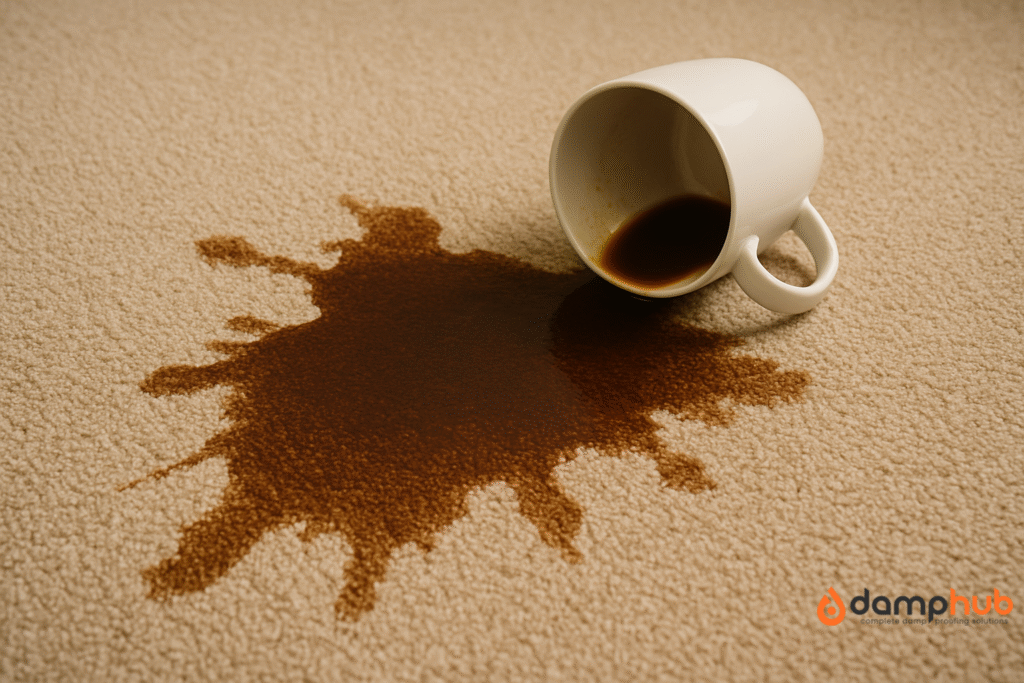
How Do I Know if My Carpet is Damp?
- A musty, earthy odour that doesn’t go away after vacuuming
- The carpet feels cold, clammy, or damp to the touch
- Stale air in the room, especially after rain
- Increased allergy symptoms or sneezing
- Dark patches or discolouration
- Peeling skirting boards or bubbling paint nearby
👉 Must read: How to Get Rid of a Damp Smell
How Do I Get the Smell of Damp Out of My Carpet?
1. Find and Stop the Cause of Moisture
You will not eliminate the odour until you end the cause of wetness.
- Inspect for leaks, particularly around pipes, heaters, and windows.
- Survey for signs of rising damp on lower walls.
- Check the carpet and underlay in several places for dampness.
- Alternatively, use a damp meter or hire a damp surveyor if in doubt.
Useful Resource: Property Care Association – Find Damp Experts
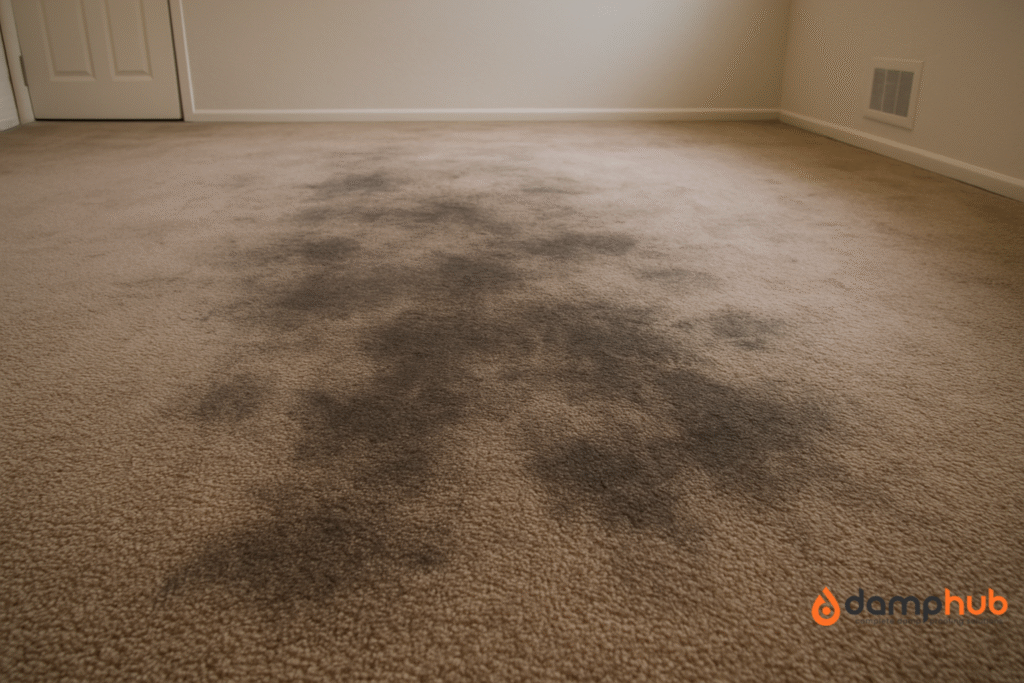
2. Dry the Carpet and Room Thoroughly
Trapped moisture beneath the surface is the source of the odour. Pay attention to complete drying.
Drying Tools & Tips:
- Treat with high-powered fans or carpet dryers.
- Open windows for better ventilation.
- Use a dehumidifier for 24–72 hours (best for basements).
- Lift carpet corners to provide airflow underneath.
- Set absorbent towels or cloths to draw moisture up.

3. Deodorise with Natural Products
Once dry, neutralise lingering odours using natural, non-toxic remedies.
DIY Deodorising Methods:
| Product | How to Use | Effect |
|---|---|---|
| Baking Soda | Sprinkle generously on dry carpet, leave overnight, vacuum thoroughly | Absorbs moisture & odour |
| White Vinegar Spray | Mix 1:1 with water, lightly mist, let dry | Kills bacteria & neutralises smells |
| Activated Charcoal | Place nearby in open containers | Absorbs musty air |
| Coffee Grounds | Bowl near carpet for a few days | Natural air freshener |
| Essential Oils | Add to baking soda (lavender, tea tree) | Freshens naturally |
👉 Must read: How to Get Rid of Carpet Beetles in the UK
4. Deep Clean the Carpet
Surface cleaning might not extend to the cause. A more penetrating method is usually required.
Cleaning Methods:
- Vacuum thoroughly with a HEPA filter
- Steam clean with hot water extraction (rent or buy a machine)
- Enzymatic cleaners for pet or organic stains
NB:
When steam cleaning, have carpets 100% dry afterwards to avoid additional damp buildup.
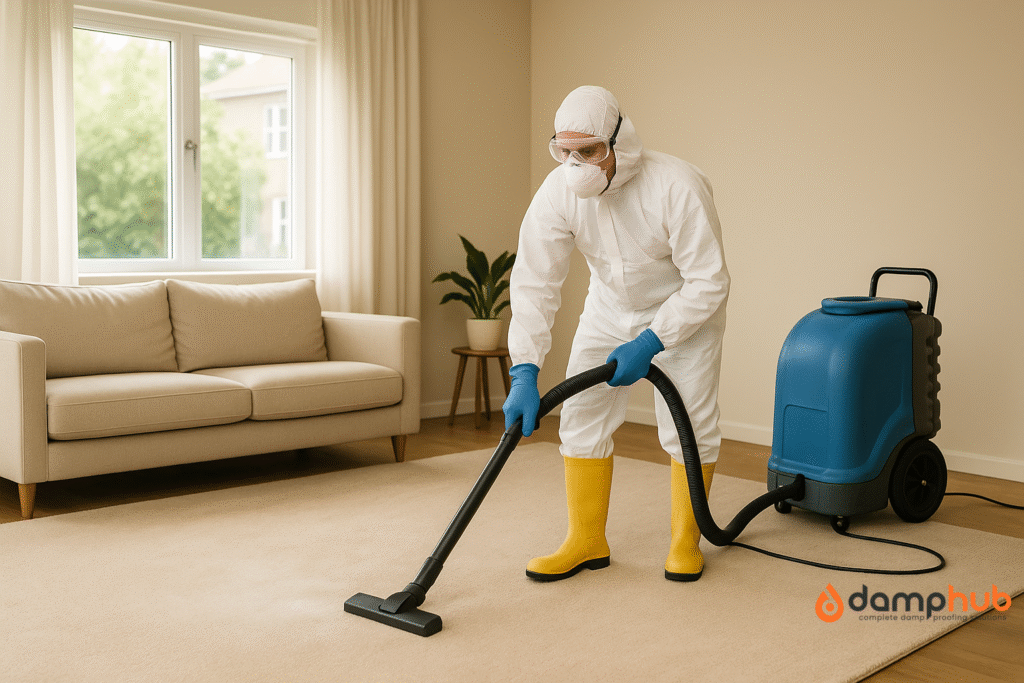
5. Treat or Replace Underlay If Necessary
If the odour continues, it can be emanating from under the carpet:
- Lift a corner with care and examine the underlay
- If there’s mould or staining, it’s worth replacing the underlay
- Clean and dry the subfloor completely before installing a new one
👉 Related Blog: What is Rising Damp – A Complete Guide
Prevention Tips: Freshen Up the Carpet
After you’ve removed the odour, use the following tactics to prevent it from coming back:
Do:
- Utilise dehumidifiers in basements or humid rooms
- Open windows once a day to ventilate rooms
- Immediately and thoroughly clean up spills
- Install rugs or mats in high-traffic or entry points
- Clean carpets every 6–12 months
Don’t:
- Leave carpets wet after mopping or cleaning
- Neglect small leaks or condensation accumulation
- Put furniture or rugs over a damp-smelling spot
Real-Life Example
Scenario: Resident detects a damp odour in the living room close to the wall. No recent spillage.
Actions Taken:
- Checked for damp walls—minor rising damp found around skirting board
- Used a dehumidifier and raised the carpet edge
- Treated with vinegar spray, then sprinkled with baking soda overnight
- Used the fan for 3 days, then vacuumed
- Steam cleaned and deodorised repeatedly
Outcome: Odour eliminated and prevented from coming back by adequate ventilation and moisture management.
When It’s More Than Just Smell: Mould Risk
At other times, the odour indicates that mould is already growing underneath or in the carpet.
Look out for these signs:
Warning Signs:
- Deep green, white, or black blotches
- A very strong, musty, earthy odour
- Better allergies, coughing, or wheezing
- Mould is seen under the carpet or on the underlay
In such a case, it might be best to:
- Take out the damaged carpet and underlay
- Treat the subfloor with mould-killing treatments
- Use professional remediation services
Health Risk Info: NHS – Damp and Mould Risks
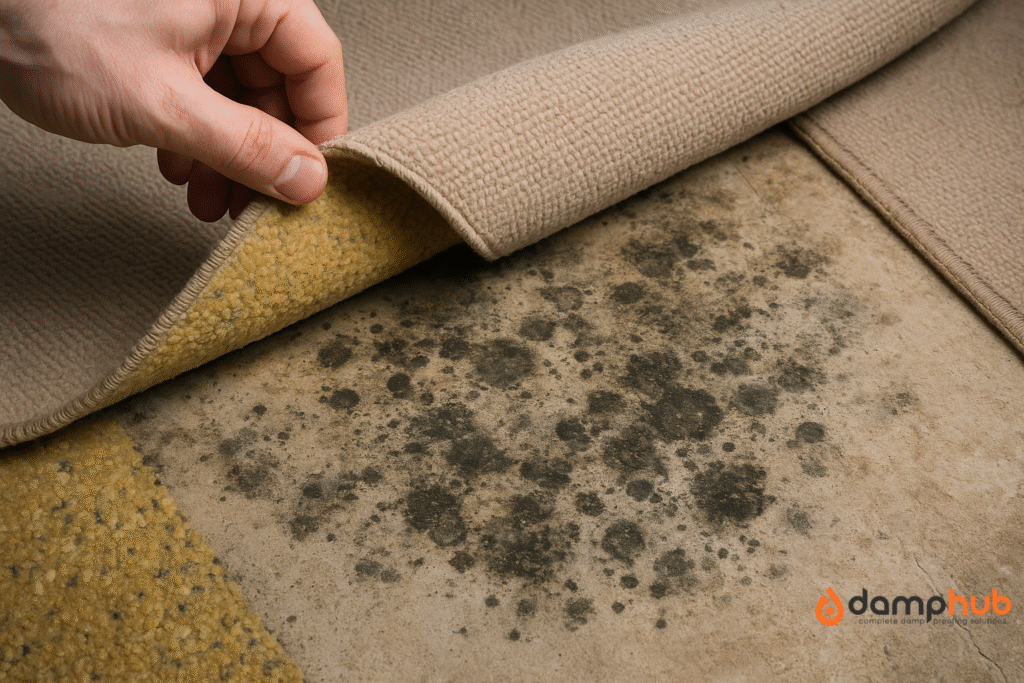
When to Replace the Carpet
If the smell persists even after intensive cleaning and drying, replacing the carpet might be the next step, particularly if:
- It’s more than 10–15 years old
- The underlay is irreparably damaged or has an odour
- There’s obvious mould or deep discolouration
In damp-prone areas, consider:
- Low-pile or synthetic carpets
- Moisture-resistant underlay
- Improved ventilation and dehumidifiers
Final Thought
Eliminating damp carpets smell involves more than masking the odour. It’s about remembering the following:
Quick Recap
- ✓ Identifying and fixing the moisture source.
- ✓ Thoroughly drying the carpet and the room.
- ✓ Using natural or deep-cleaning solutions.
- ✓ Treating or replacing the underlay if necessary.
- ✓ Adopting long-term prevention strategies.
By following these expert-backed steps and resources, you’ll restore a fresh, healthy indoor environment—and prevent that stubborn smell from coming back.
Answers to Common Questions
What can I put under carpet to stop damp?
To stop damp under a carpet, use a moisture barrier like plastic sheeting or damp-proof membrane before laying the underlay. Choose an anti-moisture underlay designed for concrete or basement floors.
In older homes, also consider using vapour barriers, especially in rooms prone to humidity. The key is stopping rising damp from coming through the subfloor before it reaches the carpet.
How to quickly remove moisture from carpet?
Start by blotting the area with clean, absorbent towels to soak up as much water as possible.
Then, use a wet/dry vacuum, fans, and a dehumidifier to speed up the drying process.
For deeper moisture, gently lift the carpet edges to allow air circulation underneath. Quick action helps prevent mould and musty smells from developing.
How to tell if there is moisture under carpet?
Signs of moisture under a carpet include a musty smell, damp padding, or discolouration on the surface.
You might also feel a cold, squishy sensation underfoot. In some cases, mould may appear along the edges or baseboards.
For certainty, lift the carpet edge or use a moisture meter on the subfloor or underlay.
Why is my carpet damp but not wet?
A carpet that feels damp but not wet may be affected by slow, consistent moisture, often from rising damp, condensation, or humidity trapped under the flooring.
This kind of dampness builds over time without leaving visible pools of water. It’s common in rooms with poor airflow or where the floor lacks a proper moisture barrier.
How to get rid of smell in carpet fast?
Start by sprinkling bicarbonate of soda across the carpet and leaving it to sit for a few hours to absorb odours.
Then vacuum thoroughly. For stronger smells, use a carpet-safe enzyme cleaner or hire a professional steam cleaning service.
Quick action matters—especially if the smell is caused by damp or mildew.
How to make sure wet carpet doesn’t smell?
Dry the carpet as soon as possible using fans, heaters, and dehumidifiers. Pull back the edges to let airflow reach the underlay.
Clean the area with a mild disinfectant or anti-mould solution, then follow up with baking soda or an enzyme cleaner. Preventing a smell is much easier than trying to remove one later.
Will damp carpet smell go away?
It might—but only if the carpet and underlay are dried thoroughly and the source of moisture is completely fixed.
If even a little dampness remains, the smell can linger or return.
Persistent odours usually mean mould or bacteria is still present, so drying alone isn’t always enough. Cleaning and treating the area is essential.
How long does wet carpet take to dry?
Drying time varies based on room temperature, ventilation, and how soaked the carpet is. On average, a damp carpet takes 12 to 48 hours to dry completely.
In poorly ventilated rooms or if the underlay is saturated, it could take longer. Using fans and dehumidifiers will speed up the process and help prevent mould.
Is the smell of damp harmful?
Yes. The musty smell of damp often signals mould growth, which can release spores into the air.
Prolonged exposure—especially for those with asthma, allergies, or respiratory issues—can be harmful.
Even if it seems mild, it’s best not to ignore a damp smell. Treat the source, dry out the area, and improve ventilation.

